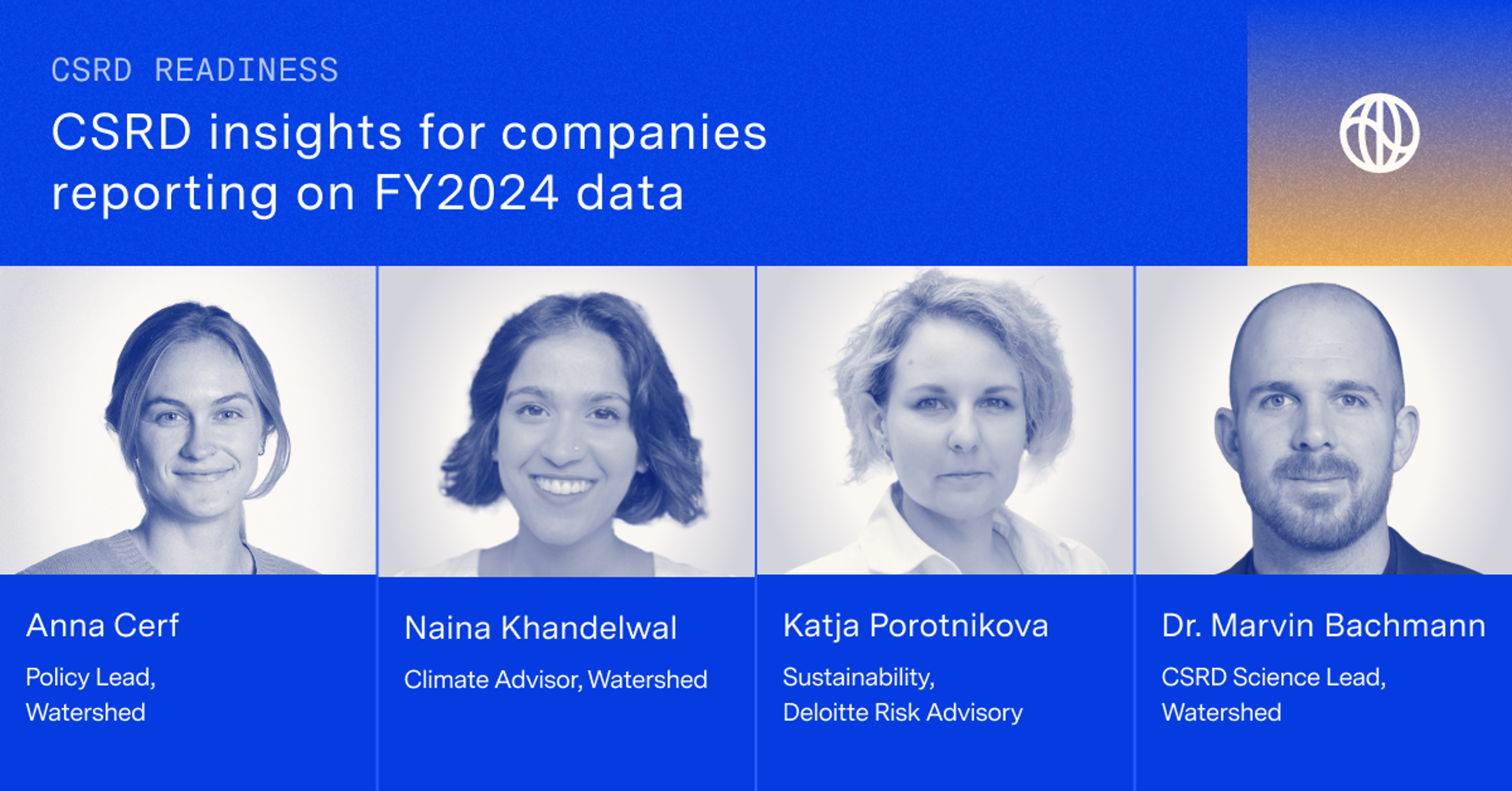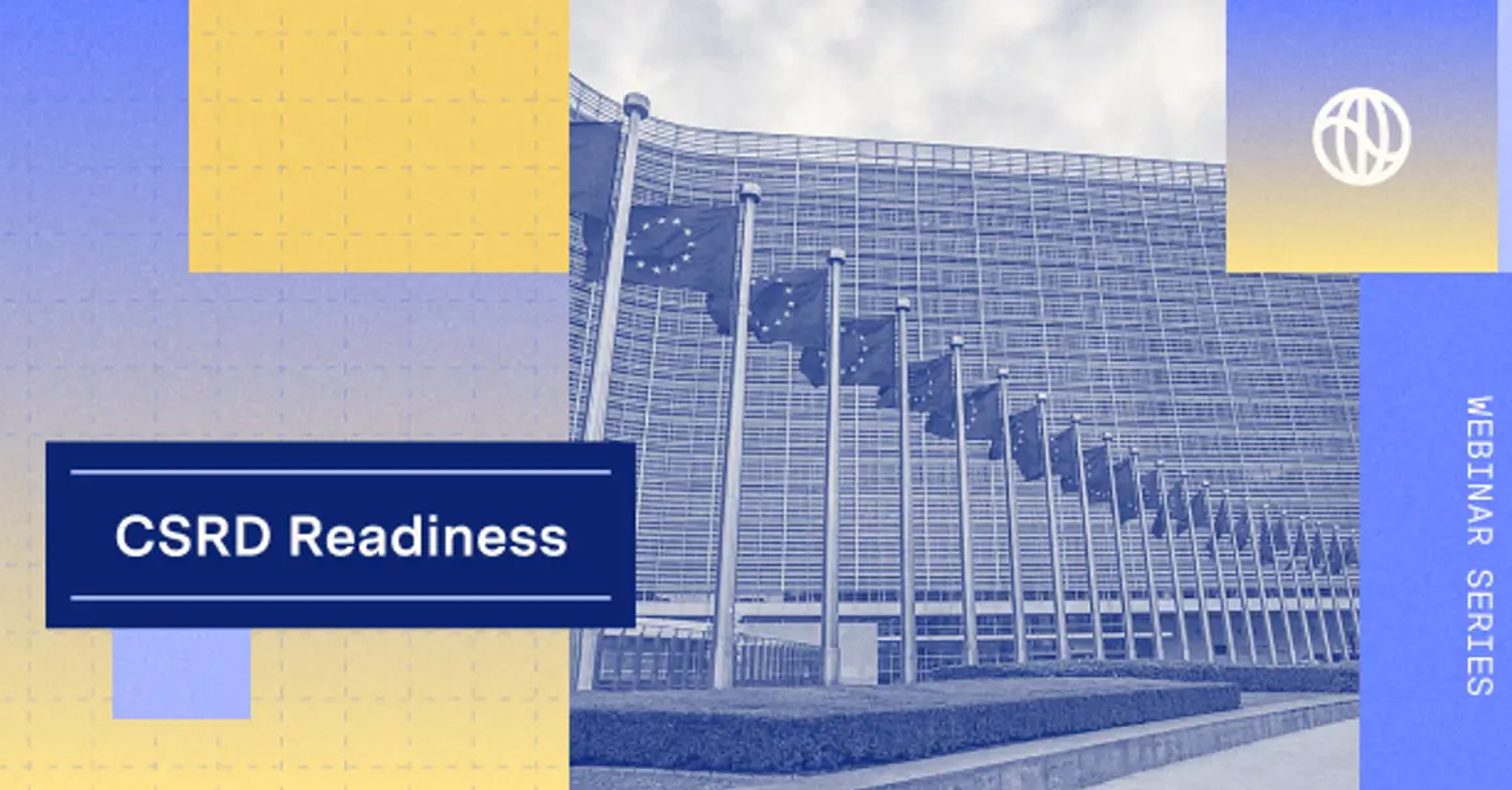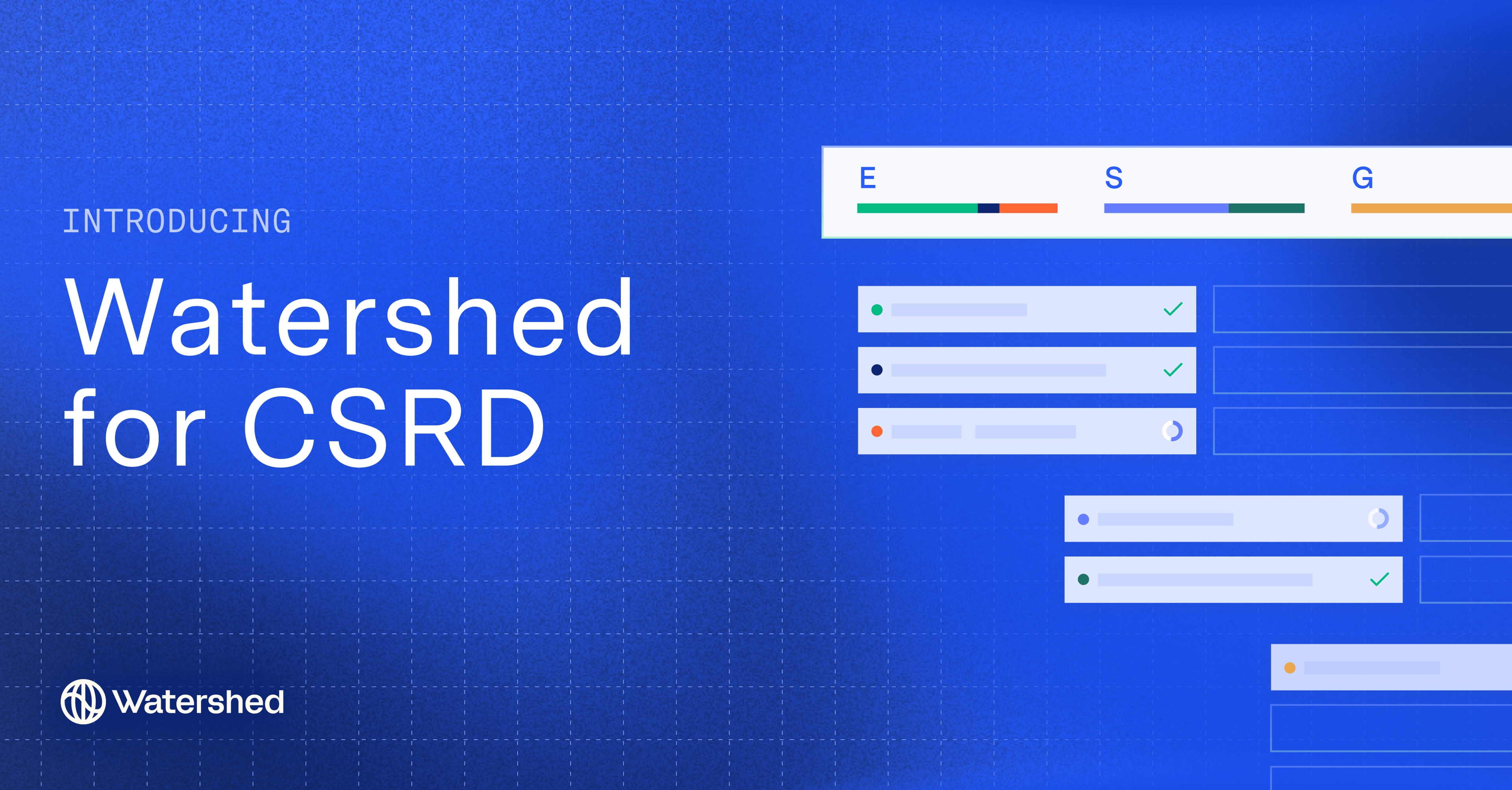The EU’s Corporate Sustainability Reporting Directive (CSRD) is a new regulation that aims to bring sustainability reporting up to the same level of rigor as financial reporting. More than 50,000 companies around the world will now be required to disclose thousands of ESG data points.
“The focus for CSRD has to be: ‘How can you make sure that your organization is not only ready to report, but all of these efforts also support you for better decision making, better investment decisions?’” says Deloitte’s Katja Porotnikova, a leading specialist on sustainability reporting and all things CSRD.
As companies move through the overwhelming process of preparing their first CSRD report, Porotnikova and other experts say it’s important not to lose sight of the major business opportunity presented by collecting and examining this critical data.
“The CSRD presents an enormous opportunity for companies to look beyond the traditional success metrics that they’ve used in the past,” says Naina Khandelwal, a sustainability advisor at Watershed. “It’s a great forcing function to collect information across material topics and do it in a standardized way.”
To learn more about the CSRD reporting process and how companies can get the most out of it, we sat down with Porotnikova, Khandelwal, and Watershed environmental data expert Dr. Marvin Bachmann to break down some of the key strategies to embrace—and mistakes to avoid.
CSRD Don’ts
If you’re one of the first wave of companies required to make CSRD disclosures next year, here are a few mistakes to avoid:
1. Don’t expect perfection
While you should aim high, the EU does not expect companies in the first wave of CSRD reporting to perfect their reporting scope in year one. The breadth and depth of reporting requirements can be daunting, but view the first year as a trial run. This period allows you to improve internal processes, create alignment across teams on sustainability planning, and invest in necessary systems and technology.
“The CSRD is just the beginning,” says Bachmann. “Global companies will fall under many other regulations in the coming years, from the California climate bills to EU deforestation regulations. The CSRD is a great opportunity to prepare early for what’s to come.”
2. Don’t assume you’re covered by current reporting standards
There is significant overlap between the E1 standard portion of the European Sustainability Reporting Standards (ESRS)—the technical disclosure rules that underpin the CSRD—and other ESG reporting standards. But the CSRD is particularly comprehensive. Your existing sustainability reporting process is typically a good place to start, but you need to compare it to the CSRD line by line to cover all necessary details.
“The devil is in the detail,” says Porotnikova. “E1 is more elaborative on how you’re expected to report on policies, action plans, metrics, and targets.”
For a general overview of how the CSRD compares with other sustainability reporting frameworks, you can consult the rubric below:

3. Don’t leave assurance until the end
Involve your assurance providers early, even during the double materiality assessment (DMA). This allows auditors to validate your DMA processes and output and allows you to avoid surprises later. It also helps your auditing team become familiar with new processes.
Porotnikova explains that assessors familiar with financial reporting might not expect the volume and scale of the sustainability assurance process. “The data is more diverse than in financial reporting, and a greater number of internal stakeholders may be involved,” she says.
CSRD Do’s:
Here are a few suggestions to make the CSRD process more efficient, and even turn it into a strategic advantage:
1. Do prioritize carefully
After your initial DMA, conduct a gap analysis to identify where you need more data. Prioritize qualitative data points based on their importance to your company and where you are receiving the most pressure from stakeholders.
“For quantitative data, look for primary data, secondary data, and areas where you will need to use estimations,” says Khandelwal. “This breakdown helps in identifying areas where collecting and reporting data will be particularly challenging.”
Companies are also expected to report on qualitative data—the sustainability policies, actions, and targets they are currently or will be implementing. This is where prioritization is most important.
“What we’re really seeing is that a lot of companies are recognizing that it is going to be very challenging to write policies, actions, and targets across every topic that they are material on for their first year of reporting,” says Khandelwal. “So I’m seeing companies prioritize those topics which are most material to them when it comes to qualitative data points. It could be places where you’re getting a lot of pressure from your stakeholders, or places where you’re expected to demonstrate action more urgently than other topics.”
2. Do use estimations where appropriate
In many situations, the challenge of the CSRD is data collection, rather than obtaining new data. For many metrics, such as high-concern substances, most companies have at least some data collected already. However, there are other required metrics (such as microplastic emissions) which are newer. In those cases, it may be appropriate to lean on estimations.
“The CSRD does not require you to use a specific methodology to create these estimations,” says Khandelwal. “You just need to be clear and transparent about the methodology you used, how you arrived at any estimates, and the assumptions your estimates were based on. For example, emissions from stationary combustion can be estimated based on the fuel consumed by appliances at your sites if direct measurement processes are not yet in place.”
For example, let’s say you need to report on emissions from stationary combustion. Those are emissions that can be directly measured and reported on, but you may not have a process in place to do so. If not, you could use an estimation based on the fuel consumed by appliances at your sites.
3. Do see it as a business opportunity
CSRD reporting isn’t just an exercise in sustainability compliance, points out Porotnikova. Rather, she says, “All these efforts support you for better decision-making—better investment decisions, better decisions on your strategic initiatives, and so on.”
For instance, the increased transparency triggered by CSRD can help you benchmark your current sustainability efforts against your industry peers.
You may also have the opportunity to boost your employer brand for candidates by showcasing outstanding sustainability efforts.
And, by taking a proactive approach to CSRD through building the internal processes, governance structures, and technology stack to support efficient sustainability reporting, you’ll have a headstart on your competition as sustainability reporting requirements increase in the future.
If you’re unsure of your CSRD reporting requirements and how they differ from your existing reporting efforts, Watershed can help.
Our enterprise platform will help you manage your ESG data, prepare your disclosures, and understand the CSRD requirements. And if you’re looking for more detailed information about the CSRD, check out our in-depth guide for companies and our expert-led and highly actionable webinar series.







